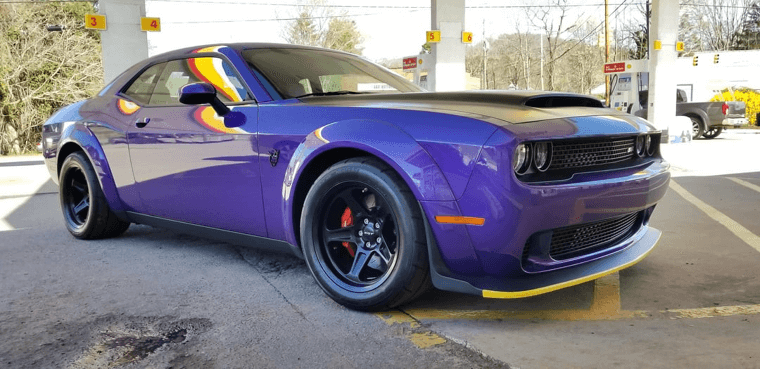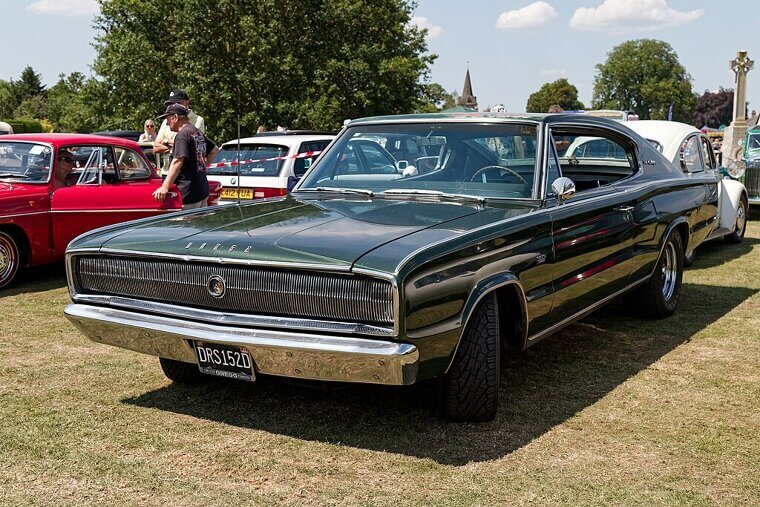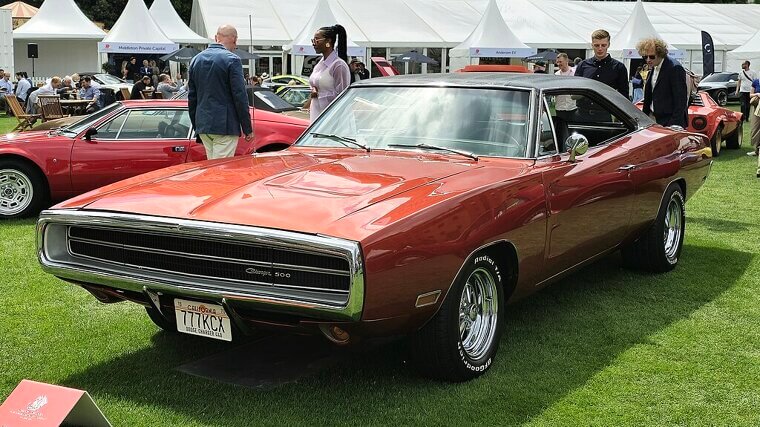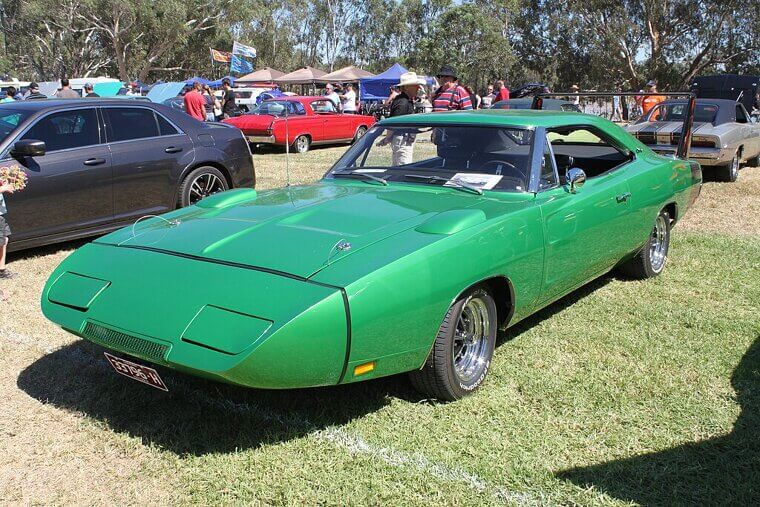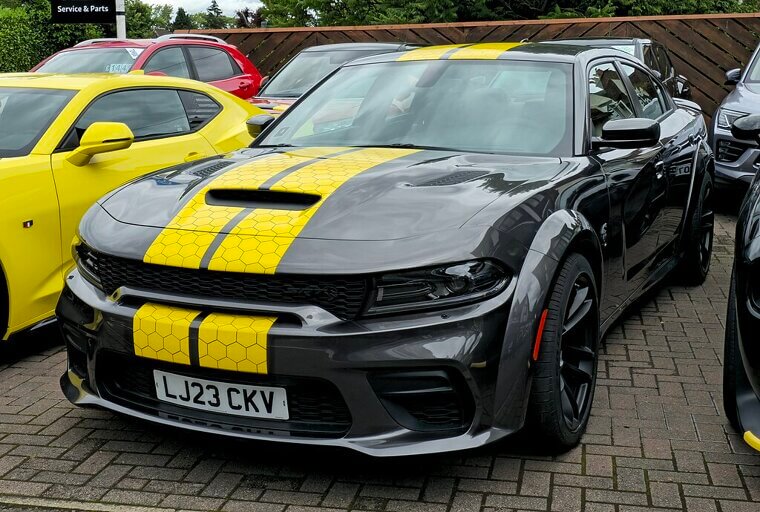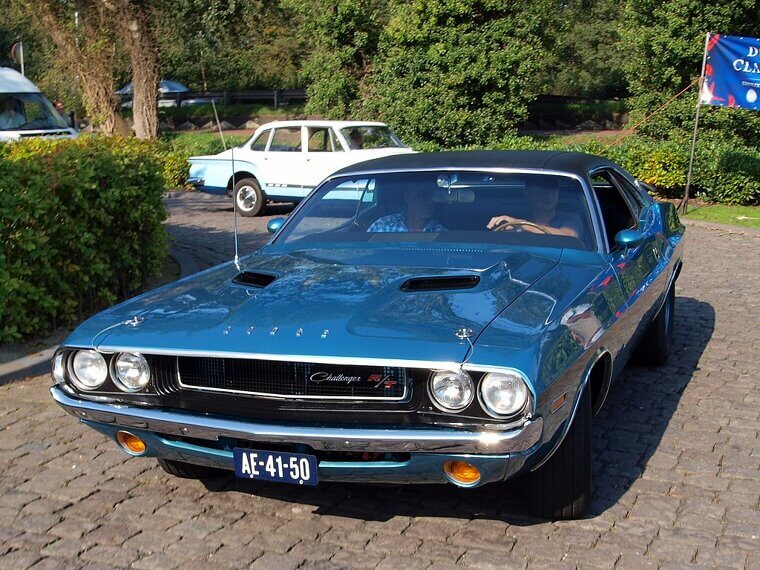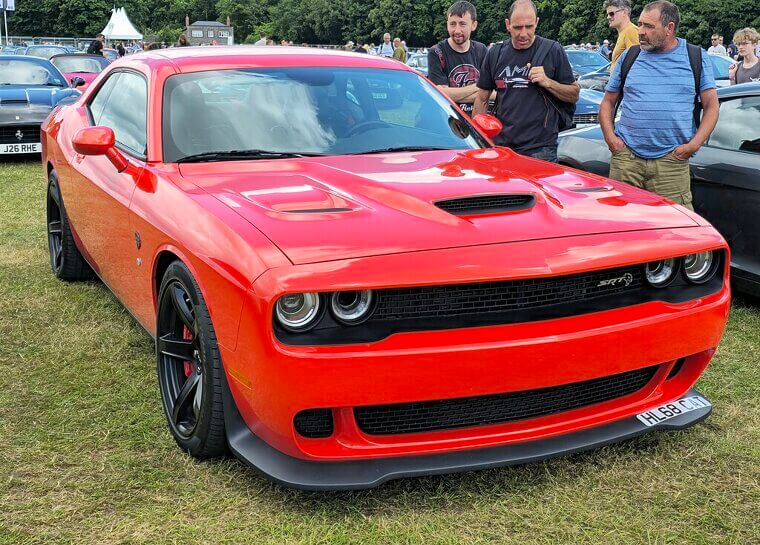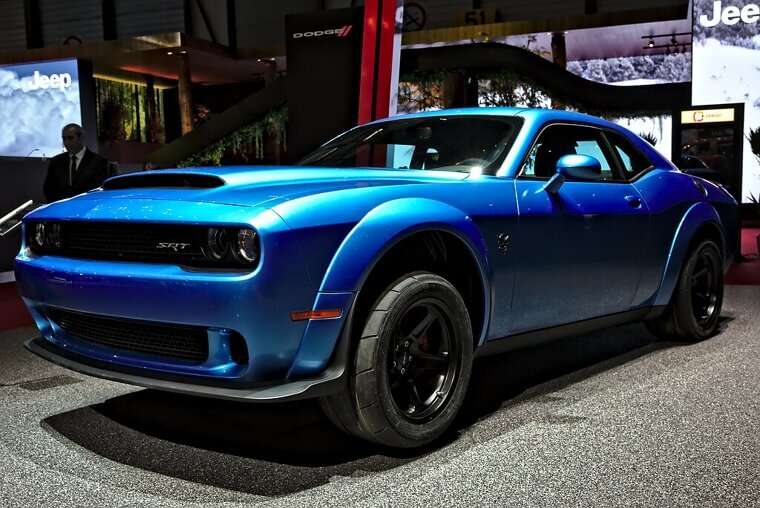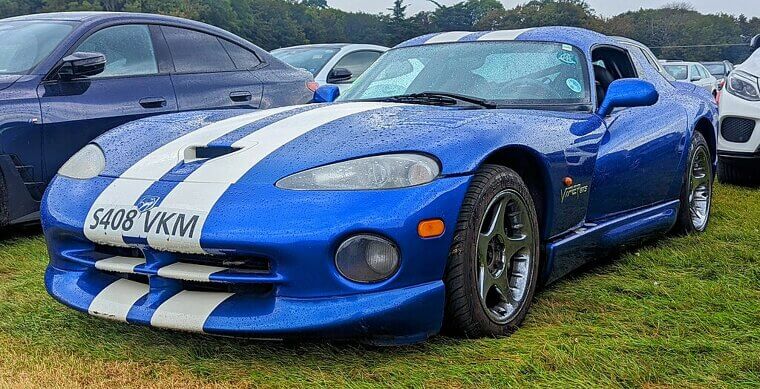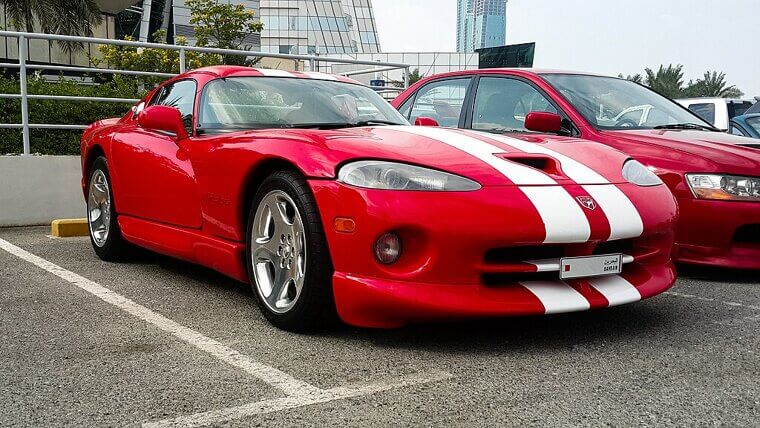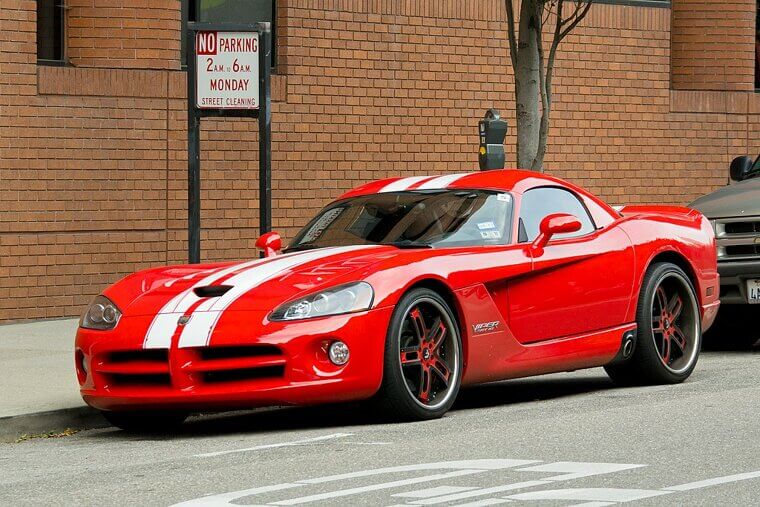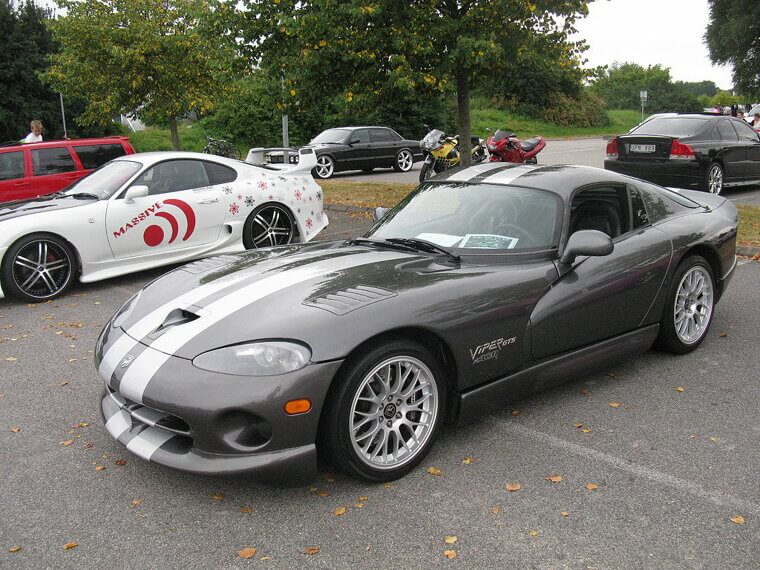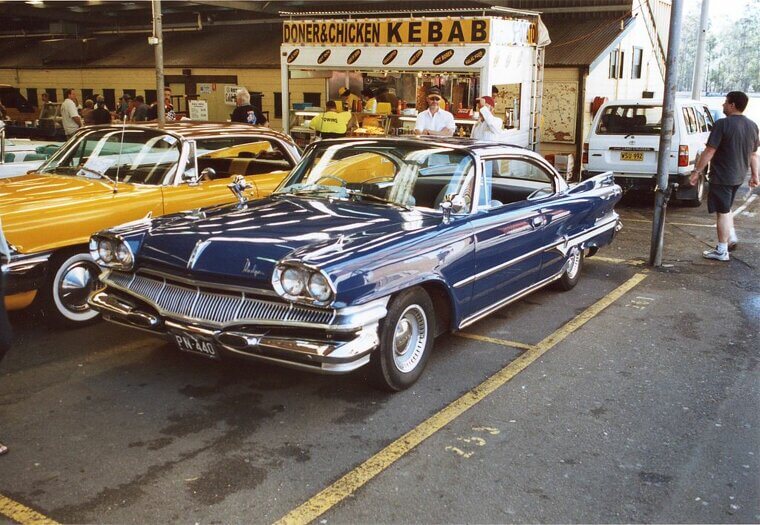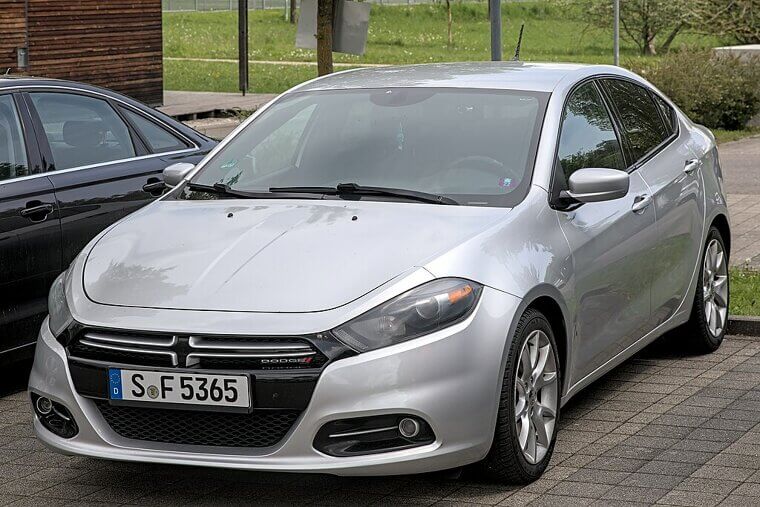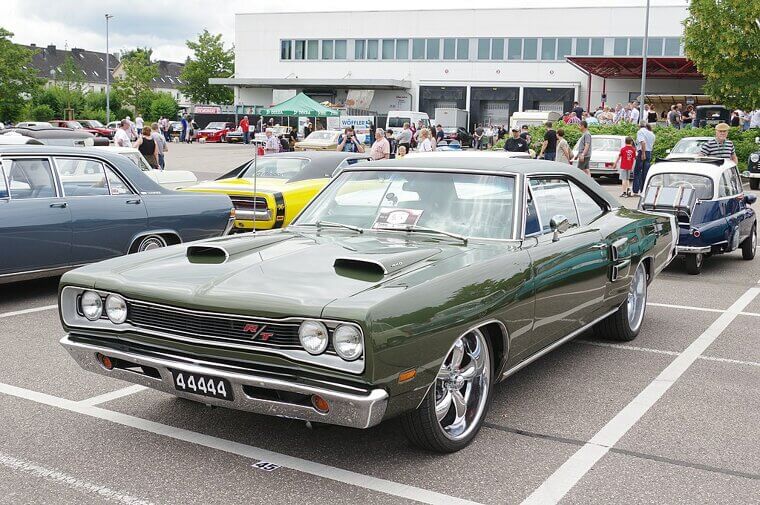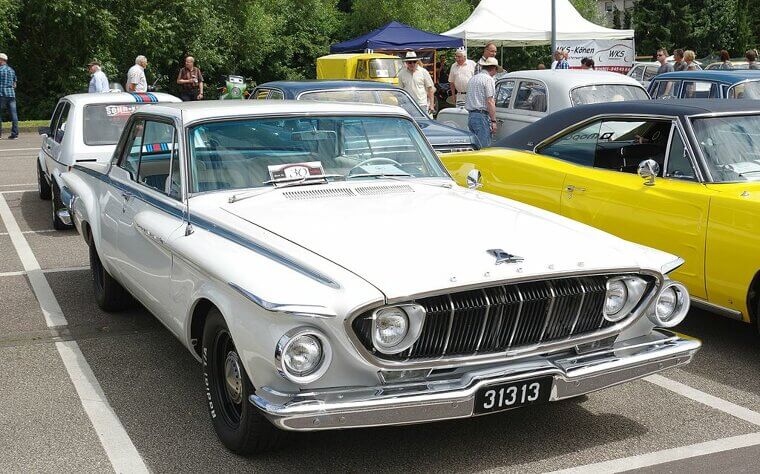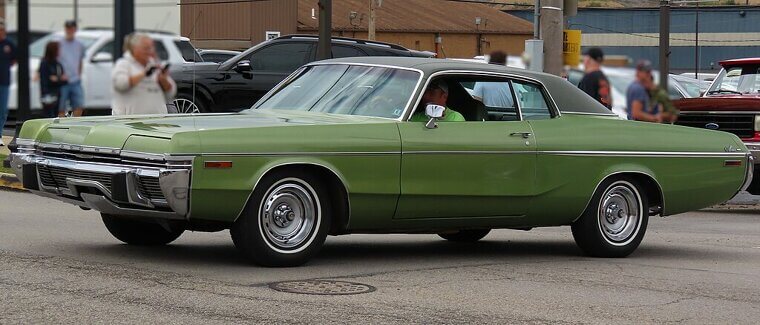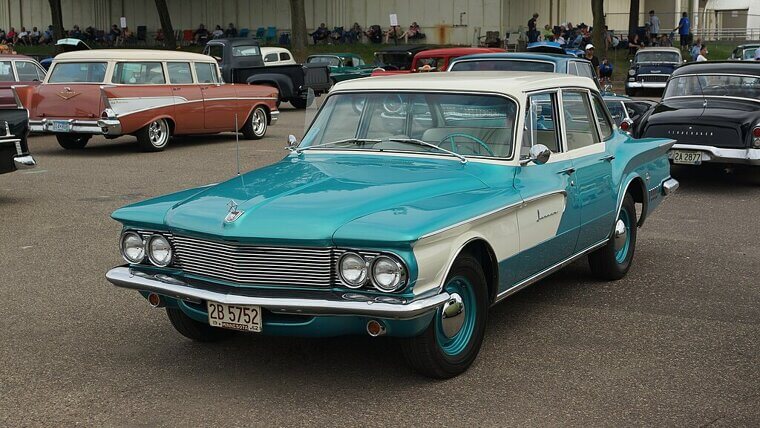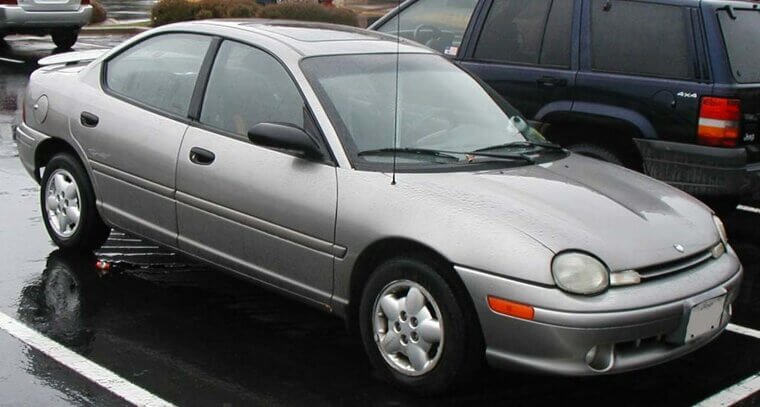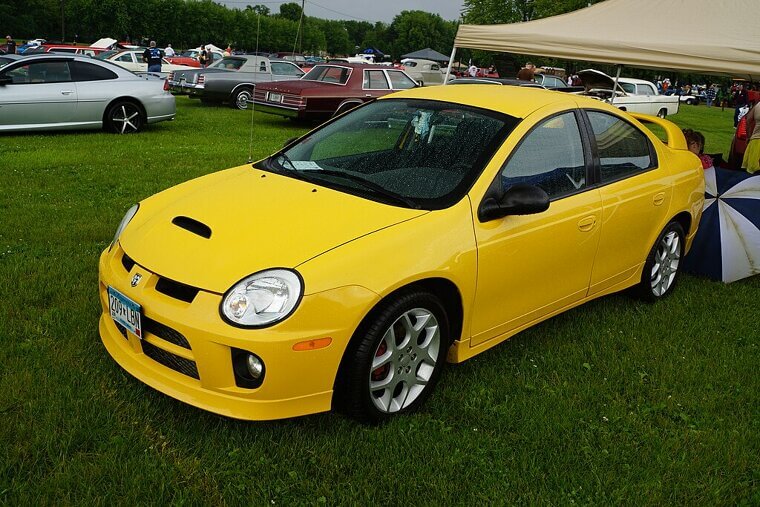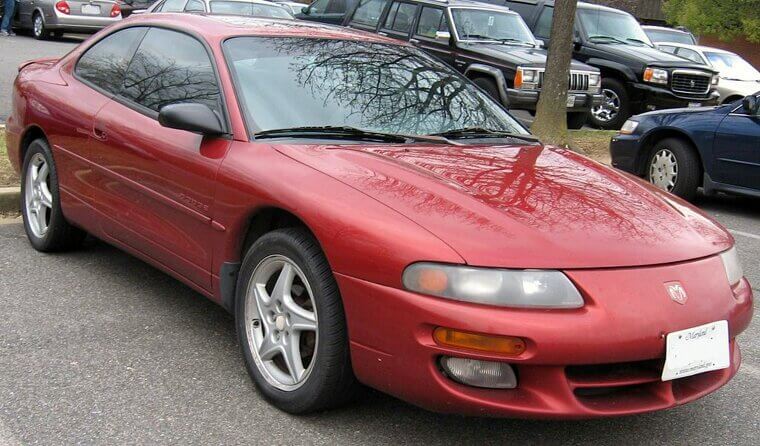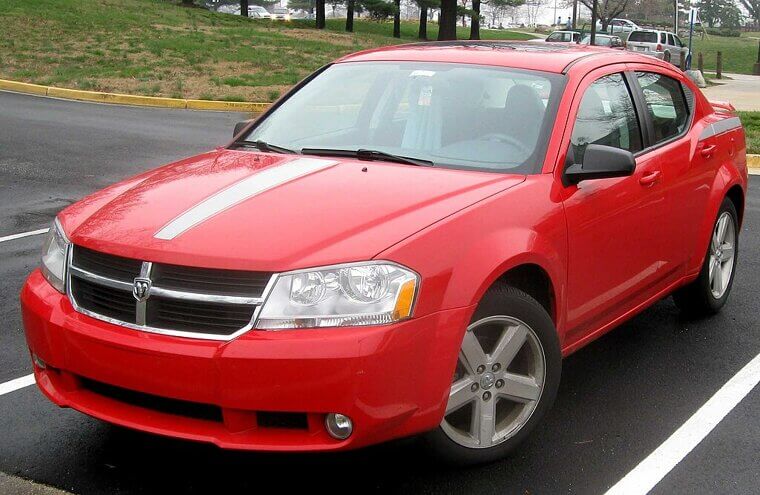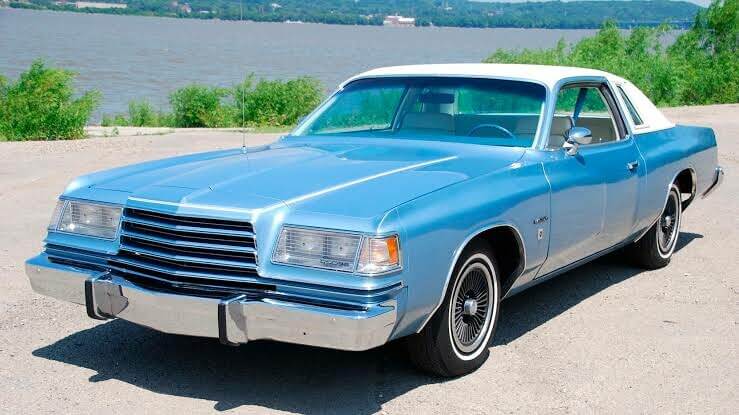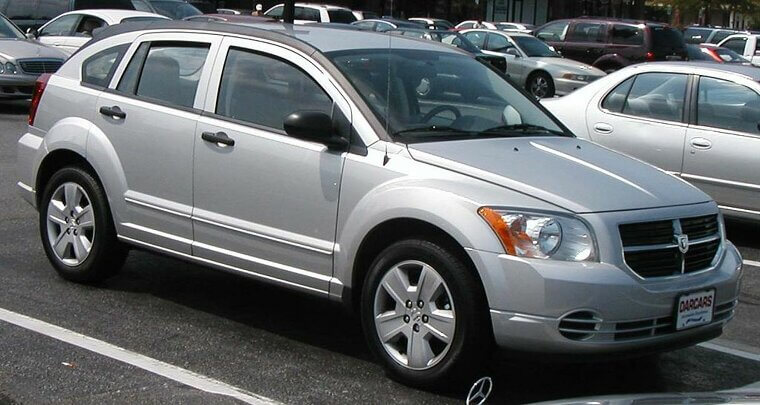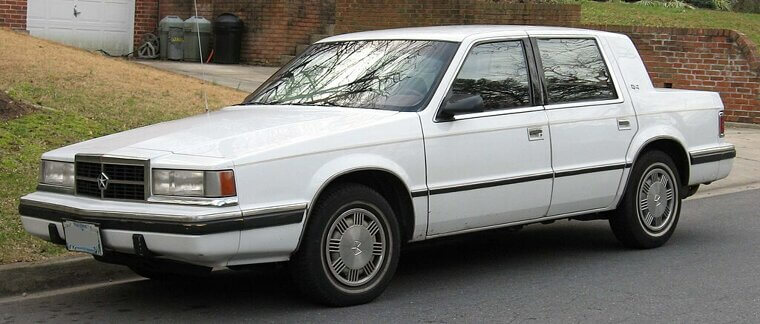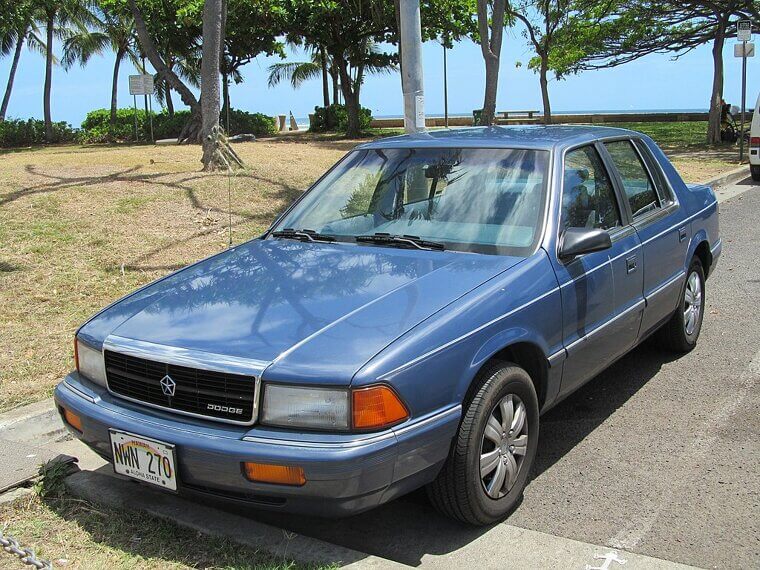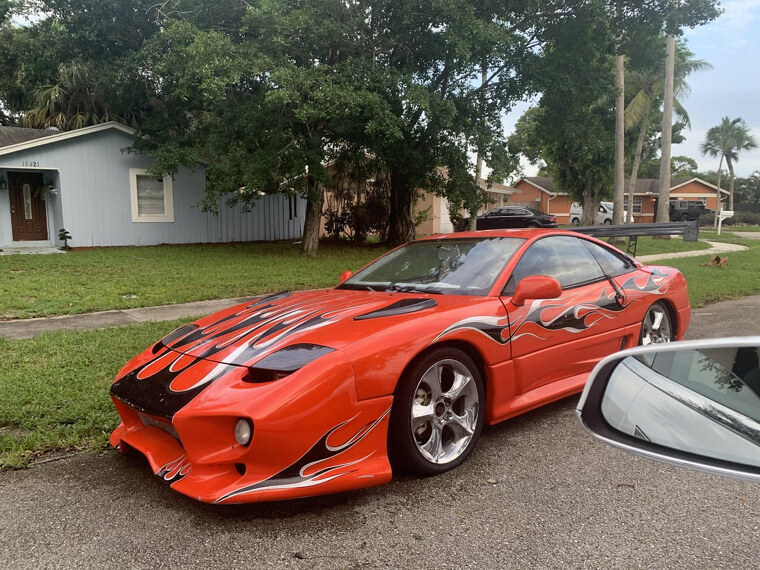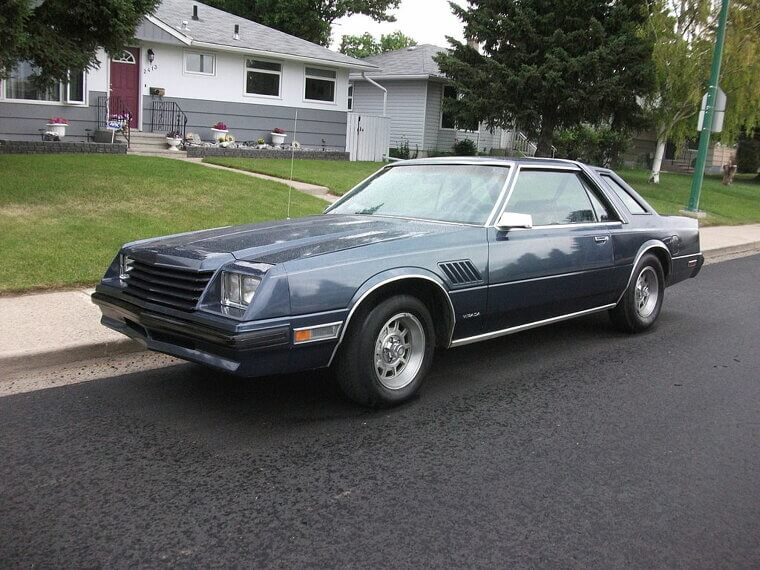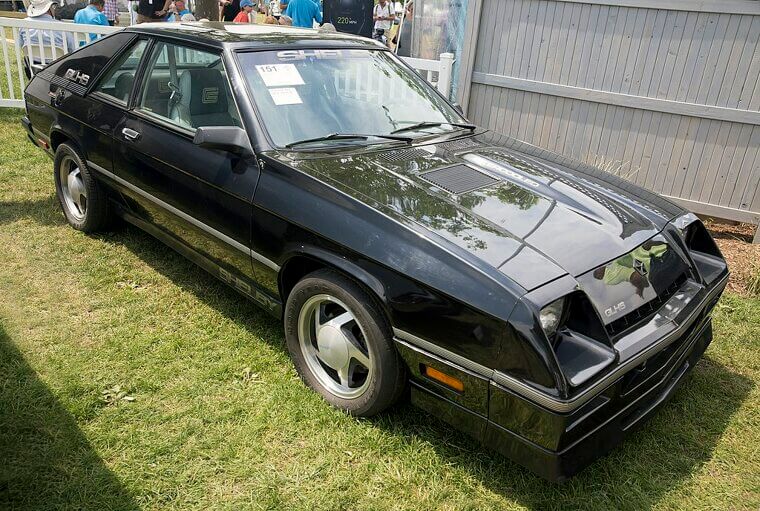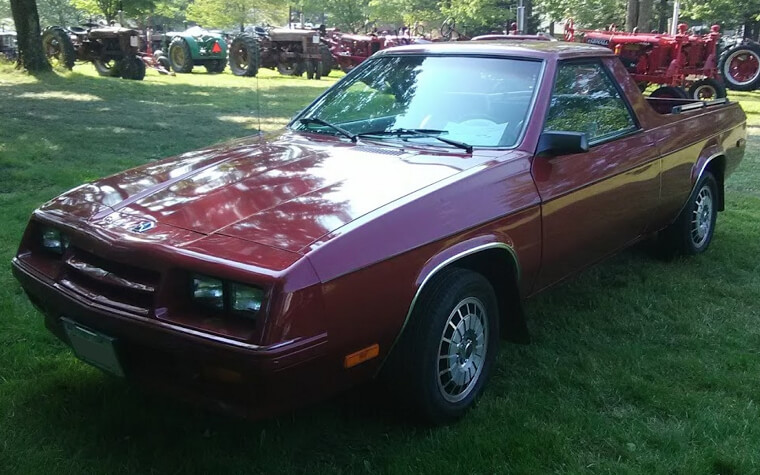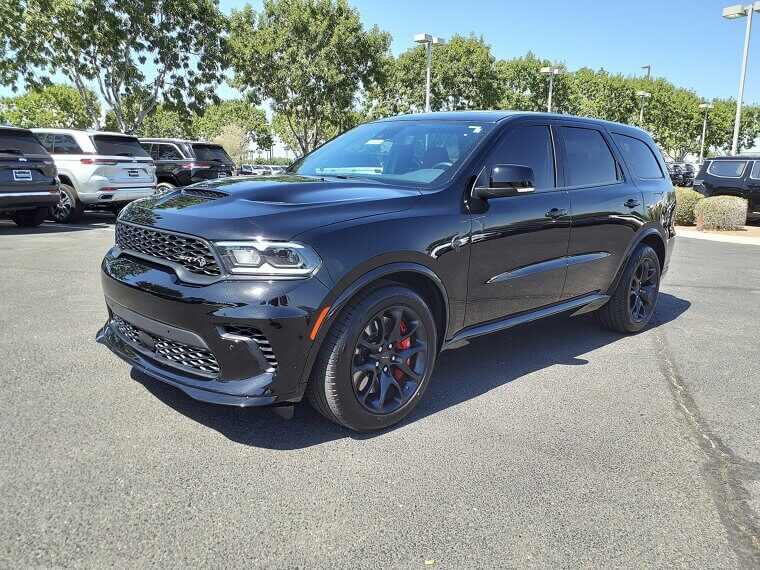Dodge Challenger SRT Demon 170 (2023)
So you thought the Hellcat was fast? The feral Demon series left it eating dust and burnt rubber! The most powerful combustion engine Dodge ever made explodes in a brutal 1,025 horsepower and 945 lb-ft of torque. It also runs on E85 ethanol! Its limited edition 3,300 units sold like hotcakes.
Dodge Charger (1st Gen, 1966–1967)
As muscle car popularity started to boom Dodge released the first gen Charger - a coronet chassis with sleek curves, hideaway headlights and a fastback roofline, but most importantly: a roaring V8 under the hood! It wasn’t a huge sales success, but it was a tone-setter.
Dodge Charger R/T (1968–1971)
If you’ve seen “Bullitt” or “Dukes of Hazzard” then you’ve seen the Charger R/T in all its hidden- headlight, coke-bottle-shaped glory. The ’69 model in particular is legendary, but it wasn’t all just sweeping curves and attitude; it was also built for speed.
Dodge Charger Daytona (1969)
The Daytona was created for one reason - to dominate NASCAR - and it was a huge success. Designed with an aerodynamic nose cone and wind tunnel-tested, it’s the first vehicle in NASCAR history to break 200 mph, and it proved so effective the organization banned aero cars.
Dodge Charger Hellcat (2015–present)
If the muscle car was truly dead, the Hellcat went down to the underworld and clawed it back to the surface. What looks like an impressive sedan is actually a roaring beast with a supercharged HEMI V8 engine capable of melting pavements with up to 807 horsepower (hp).
Dodge Challenger (1st Gen, 1970–1974)
When Mustang and Camaro were flaunting their show horses in the pony car war, Dodge arrived - stylishly late - with the first gen Challenger. It was an untamed wild stallion with over nine engine options, a fearsome shape and power to burn. It lived fast and died young.
Dodge Challenger SRT Hellcat (2015–2023)
The SRT Hellcat seemed to come from the past pony car wars and the future simultaneously, dragging muscle car dreams with it and under-hood voodoo that could generate from 707-807 hp. It chugged gas, but Dodge didn’t care - the Hellcat was a revolution on wheels, and proud of it.
Dodge Challenger Demon (2018)
The Challenger Demon was built for drag racing: its race fuel-powered 6.2L supercharged HEMI V8 engine could erupt in 840 hp and go from 0-60 in 2.3 seconds off the factory floor. No wonder the NHRA banned it for being “too fast without a roll cage!”
Dodge Viper (RT/10, 1992–1995)
Designed by the legendary Carroll Shelby as a spiritual successor to the Cobra, the Viper’s 8.0L V10 engine struck with lightning speed. It was bereft of anything that could slow it down: no airbags or traction control… it didn’t even have windows!
Dodge Viper GTS (1996–2002)
Many see the GTS as the definitive Viper, a refined version of its predecessor that kept all of its wild savagery but honed it to a deadly point. You felt its V10 engine in your bones, and even official racecars used it as a basis for their designs.
Dodge Viper SRT-10 (2003–2010)
The SRT-10 came with a sharper, meaner new look, but its goals were the same: generate enough horsepower to light up a metaphorical city. It did just that - its roaring engine hit 500 hp at launch (later boosted to 600) but it still avoided tire traction like the plague.
Dodge Viper (Final Gen, 2013–2017)
The Viper’s final gen got a modern carbon fiber-wrapped, aerodynamic upgrade - it looked like the batmobile had a love child with a jet fighter, and it had enough bite to make Ferraris sweat nervously. It was discontinued in 2017 because it couldn’t fit side-curtain airbags in.
Dodge Dart (Classic, 1960–1976)
In a challenge to its gas efficient and imported rivals Dodge went compact with the Dart, and created a nippy but surprisingly tough little fun muscle that got even more growl with V8 options. It also became a firm favorite for being mod-friendly - customize your own bad boy!
Dodge Dart (Modern, 2013–2016)
Dodge tried to reclaim the Dart’s glory days with a modern update, though rebadging an Alfa Romeo Giulietta to do it wasn’t the strongest move. It was still a good ride, it just lacked that Dart energy so it’s more iconic for its fizzle than its fire.
Dodge Super Bee (1968–1971)
When the roads filled with more affordable muscle cars, everyone was a budget badass, and Dodge wanted in. Enter the Super Bee, a brash, big-block monster with a buzz like thunder (especially with the legendary 426 HEMI engine option). It was fast, fun and a little cheeky.
Dodge Coronet R/T (1967–1970)
The Coronet R/T was basically a bruiser dressed up for a night at the opera - a chrome-accented, lean racing machine and one of the earliest Mopars to get an R/T (Road/Track) badge to declare its intentions to the world.
Dodge Polara (1960–1973)
Dodge wanted to capture the space-age vibe of the era, so it named its new model after the Polaris, and it was a real star: a big and brash chrome-covered ride with fins for days. It was a statement, and had many roles - even police fleets used it at one point!
Dodge Monaco (1965–1978)
Dodge upped the ante with the Monaco, a ride that offered luxury in spades wrapped in the attitude of a back alley brawler. It’s probably best known for its appearance in “The Blues Brothers,” but also for its unapologetically-huge footprint and an engine like beating war drums.
Dodge Lancer (1961–1962)
The Lancer was created as a play for the compact car market, and while it was a little underpowered (it was essentially a rebadged Plymouth Valiant) it was nimble and got Dodge’s foot in the door for future compact roughhousing.
Dodge Lancer (Compact, 1985–1989)
While the initial Dodge Lancer was a “hip” and practical ride for the yuppie market, that all changed when Carroll Shelby sprinkled his success over it and created the Shelby Lancer, a limited edition turbocharged beast with enhanced suspension and thrills.
Dodge Neon (1995–2005)
The Neon showed that Dodge didn’t have to be aggressive - it could be friendly, too! The ad’s slogan was simply “Hi.” but if you’re thinking it didn’t have teeth, the Neon ACR (American Club Racer) version won 12 racing championships. In its first year.
Dodge Neon SRT-4 (2003–2005)
As if the Neon wasn’t enough of a winner, Dodge decided to slap a turbo onto its compact car. The result? An unassuming little thing that hissed like a rattlesnake and did 0-60 mph in 5.3 seconds, earning it the nickname “Viper Jr.”
Dodge Avenger (Coupe, 1995–2000)
Before Marvel gave the name movie chops, the Avenger was a Dodge-Mitsubishi collab based on the Mitsubishi Eclipse platform. Dodge marketed it as budget cool, and it arrived with decent styling; the V6 engine option gave it a smooth ride, too.
Dodge Avenger (Sedan, 2008–2014)
In an attempt to revive the Avenger, Dodge brought it back for 2008 as a mid-sized sedan, though it was uninspired. The 2011 refresh changed all that, adding more fun, a 3.6L Pentastar V6 engine capable of 283 hp and heated/cooled cupholders. Because they could.
Dodge Intrepid (1993–2004)
When Dodge created the Intrepid, it really tightened up its belt for a modern audience - the Intrepid was futuristic-looking for its day with a low hood and spacious interior for added practicality. In fact, it was so versatile that law enforcement and NASA both used it at one point!
Dodge Magnum (Muscle Wagon, 2005–2008)
The Magnum was Dodge’s effort to make wagons cool, and it almost succeeded. Its bold silhouette and the throaty growl of its engine - particularly the SRT-8 version’s 6.1L HEMI V8 - told the world it meant business and it did - with cargo room to spare, too.
Dodge Caliber (2007–2012)
Now, when we say iconic, we don’t necessarily mean “amazing” so much as memorable, and the Caliber was certainly that! It was a bit of a hatchbox-crossover Frankenstein where Dodge was clearly thinking outside the box; it made 285 hp and even had a glove box chiller. Weird!
Dodge Dynasty (1988–1993)
With the Dynasty, Dodge proved once again it wasn’t all muscle and aggression. This vehicle had more of a “tech-happy dad” vibe, with some models even featuring voice alerts and digital dashes. It paved the way for the fuel-efficient era to come.
Dodge Spirit R/T (1991–1992)
Capable of an astonishing 224 hp and going from 0-60 mph in just over 5 seconds, the Spirit R/T was faster than the eye can follow in a boxy, unassuming form from the early ’90s. It was the fastest production Sedan in America when it was released.
Dodge Stealth (1991–1996)
As a rebadged Mitsubishi 3000GT, that company took the credit for Dodge’s futuristic Stealth ninja, but Dodge fans knowingly winked at each other. It had AWD, and the R/T Twin Turbo model came with active aero. It was a 300 hp beast.
Dodge Aspen (1976–1980)
The Aspen was unfortunate enough to be created during the gas crisis and it tried to be everything at once - comfortable, compact, stylish and affordable. Considering what it was up against, it wasn’t a bad attempt but attracted rust like a moth to flame.
Dodge Mirada (1980–1983)
Racing driver Richard Petty wanted to take on NASCAR in the Mirada, but it didn’t meet the cut. It was a cruiser first and foremost, so even though it strained for muscle car relevance (there was an emission reg-choked 5.9L V8 option) it couldn’t quite get there. It was still a cushy ride, though.
Dodge Omni GLH (Goes Like Hell, 1984–1986)
A Caroll Shelby hot hatch masterwork, the GLH (Goes Like Hell) lived up to its name by achieving 0-60 in under 6 seconds - that’s crazy for a front-wheel hatchback in its time. It was light, turbocharged and threatened BMWs that dared to glance its way.
Dodge Rampage (Mini Pickup, 1982–1984)
The Rampage was a front-wheel-drive ute before the term came to be, and was basically Dodge’s attempt at making pickups cute. It worked, too; it had a 4 or 5-speed manual and to further add practicality, it could haul 500 lbs.
Dodge Durango SRT Hellcat (2021–present)
The world’s most powerful SUV with an exhaust note that sounds like a trumpeter announcing the apocalypse, the SRT Hellcat is a fire breathing AWD beast with a 6.2L supercharged HEMI V8. It’s got three rows of seats, hauls 8,700 lbs and makes a blistering 710 hp. It’s just insane.

